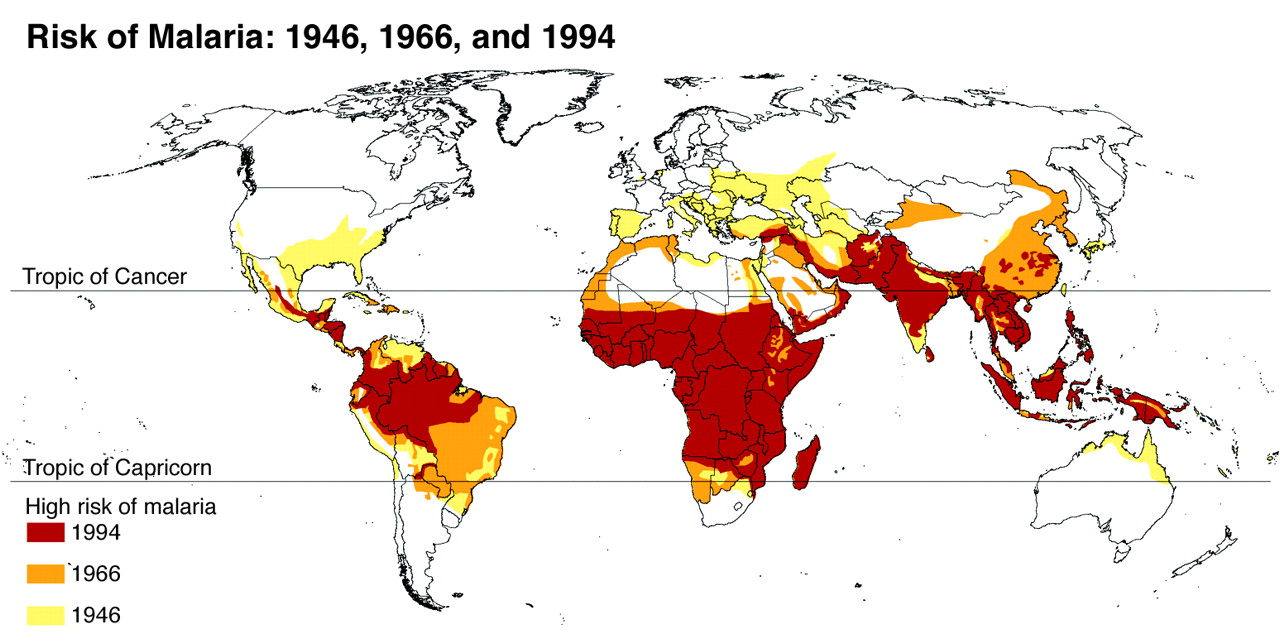We've spent some time now in the virtual mosquito lab, seeing how allele frequencies change over time, let's see how our virtual lab compares to the real world.
Attempts to Eradicate Malaria

In 1955 the Global Campaign to Eradicate Malaria was launched with the intent to bring an end to the disease. The campaign relied heavily on the use of the insecticide DDT to kill the mosquitos which carried the disease. This approach was very sucessful in subtropical countries where in most cases the risk of malaria was almost entirely removed (see figure 1). However the campaign was phased out by the end of the 60's for various reasons, the most important of which was the emergence of mosquitoes that were resistant to DDT.
We can see how quickly this happened by looking at figure 2. We can see that over the course of 8 years, despite increasing levels of DDT use, the number of people in India suffering from malaria increased over 30-fold. This trend is due to the increasing number of kdr_mut alleles in the mosquito population and hence the increase of DDT-resistant mosquitoes.
In this section you'll:
- Learn about the concepts of natural selection and fitness.
- See how a disease allele can be rapidly removed from the population.
- Use simulations to see how natural selection can lead to the rapid emergence of DDT-resistance mosquito populations.

